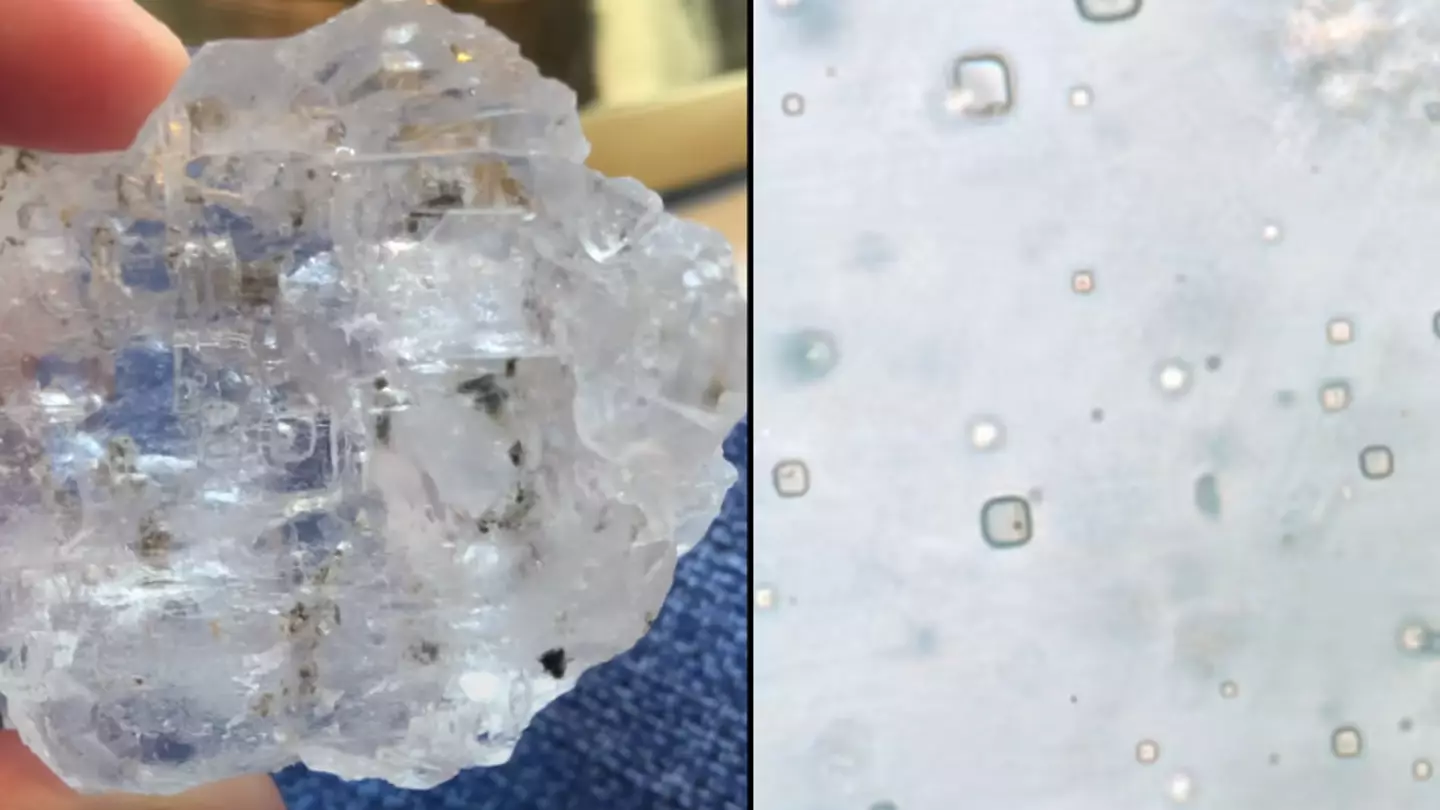
Scientists are set to crack open an 830-million-year-old rock salt crystal, which is said to contain ancient microorganisms that may still be alive.
The discovery of the ancient crystal was first announced by researchers from the Geological Society of America earlier this month, who explained that by using a selection of imaging techniques they had managed to discover tiny remnants of prokaryotic and algal life, which had been preserved within tiny, microscopic pockets of fluid within the crystal for millions of years.

These bubbles of liquid, known as fluid inclusions, could potentially serve as microhabitats for tiny colonies of life to thrive, and now scientists want to crack them open and find out once and for all whether or not this ancient life is truly still alive.
Advert
Check out the video below for an idea of how it works. See the tiny bubble moving around within the crystal? It's within this small fluid-filled cavity that scientists believe that potential hints of life could be found.
In an interview with NPR, Kathy Benison, a geologist from the West Virginia University and author of the study, explained how her team planned to open up the crystal and discover whether or not life can truly survive in such conditions.
"There are little cubes of the original liquid from which that salt grew," Benison explained. “And the surprise for us is that we also saw shapes that are consistent with what we would expect from microorganisms. And they could be still surviving within that 830-million-year-old preserved microhabitat."
But while Kathy does acknowledge that her team’s plan to bring an 830-million-year-old life form back into the modern world sounds like the premise behind a sci-fi horror film, she’s confident it will be carried out with the utmost caution.
"It does sound like a really bad B-movie, but there is a lot of detailed work that's been going on for years to try to figure out how to do that in the safest possible way," she added.
If the study is successful it could also have huge implications for the search for alien life, as scientists will be able to conclusively prove that life can survive for hundreds of millions of years if preserved properly.
This could pave the way for huge breakthroughs on Mars in particular, which contains large salt deposits that have been identified as evidence of ancient liquid-water reservoirs.

Bonnie Baxter, a biologist at Westminster College in Salt Lake City, was not involved in the study but offered her thoughts on the subject and said that these findings weren't just a major step in studying the origins of life on Earth, but also opened the door to finding life on other planets.
"When we're thinking about Mars, we're talking about billions of years, probably, since microbial life could have been flourishing in the waters on that planet. And so we really need longer experiments in rocks that have been around longer on our planet in order to understand what could happen on Mars," she said.
